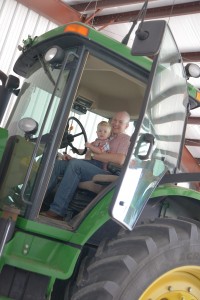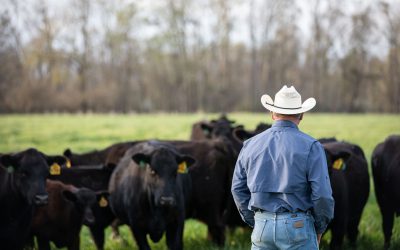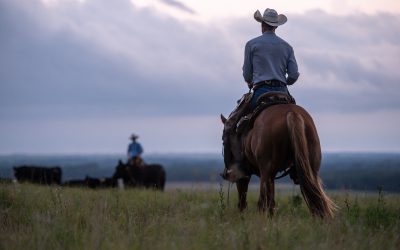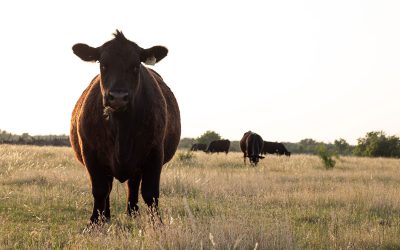
Big possibilities
That is unless you’re talking to two of our former interns, both ag communications graduates from Kansas State University, who added other experiences and more education to their resumes before landing where they are today.

“I knew I wanted to work with cattle producers and help them be more successful,” says Lance Zimmerman, analyst with CattleFax in Denver, Colo. His career goals were shaped from early experiences on his family’s diversified, central Kansas farm, along with FFA experience (including a year as a state officer).
“Producer education in the beef industry has always been an overriding theme,” he says. That’s what led him to get an ag communications and journalism degree, and apply for the Certified Angus Beef LLC writing internship along the way.
Susie Knetter is one of many who are glad he did. A couple years Lance’s junior, Susie followed in his footsteps after she heard about the opportunity from him.
“He was an excellent mentor at CAB and beyond, and his passion for the industry drew me in,” she says. That, along with encouragement from a professor and meeting Larry Corah in person, cemented it for her: “I knew there couldn’t be a better internship in Manhattan for someone interested in communications and the Angus business.”
Both she and Lance remember the assignments, the quaint Kansas office, the edits, deep conversations with Steve, but especially the stories they got to tell.
Lance still greets cattleman Mike Kasten at industry events even though nearly a decade has passed since Lance visited his Millersville, Mo., farm as a student worker. Mike’s attention to carcass and performance information when trying to improve both steers and heifers really stuck with Lance.
“It really helped me gain an appreciation for how a producer could utilize data to make more profitable operating decisions,” he says.
Susie wishes everyone would have a chance to meet the 2005 CAB Quality Assurance Officer of the Year Jerry Jackson.
“After talking with Jerry and others, it became clear that he was one of the most conscientious, positive guys you could meet. He knew genetic and health details on each pen of cattle, and had a vision for how to best market them. It was a great example of someone who truly cares about the feedyard cattle, and making sure they were well cared for,” she says.
So how does one go from interviewing and photographing cattle feeders to spending hours in the lab and barns doing swine vaccine research?
One day while Susie was visiting with her master’s advisor, it hit her:
“I loved connecting scientific knowledge with the impact it could have on a producer’s bottom line,” she says, noting that animal health connected welfare, economics and management. “I wanted to be a part of that on the science side, and research ways to improve production efficiency through animal health.”
This spring she graduated with her Ph.D. in immunobiology and now works for Merck Animal Health.
Lance’s path to CattleFax was a little less direct and involved two different full-time positions with CAB before he decided to pursue an ag economics master’s degree at K-State.
Just because he’s a “numbers guy” now, it doesn’t mean that Lance doesn’t value his experience with words.
Typically he’s trying to convey a lot of numbers and data in very short articles. “That doesn’t lessen the need for somebody to be a good writer, it heightens it,” he says.
And as happy as they were with their internship, we must say the feeling is mutual. We’re glad that this economist and scientist both decided to first share their talents as journalist with us.
May your bottom line be filled with black ink,
Miranda
PS—Want to know what Emily, Julie and Chelsea are up to? Read the back issues in this month’s Throwback Thursday series.
Know an aspiring writer and livestock enthusiast? Encourage them to apply for our Industry Information Internship here. The application deadline is Nov. 25!
You may also like
Progress from small steps
Every day is a chance to learn and get better. Thousands of others like my new friends in Alabama are taking steps to meet the shifts in consumer demand, and to know more. Small steps in the right direction can start now. Even if it’s just recording a snapshot of where you are today, a benchmark for tomorrow.
Not perfect, but working to get better
The CAB Cattleman Connection team heard its name called more than once in the virtual ceremonies, and each time came a sense of personal accomplishment, but even better: confirmation that we’re getting better at our craft. I hope that means we’re doing a better job for you.
Beefed up findings
Frank Mitloehner presents his findings on the animal ag sector’s impact on global warming. He explains how cattle counterbalance other fossil fuel sectors, proving that cattle are a solution and not a threat.



